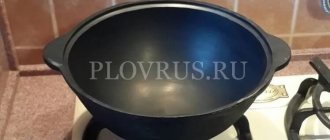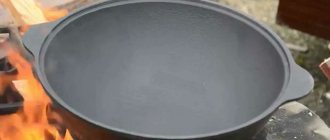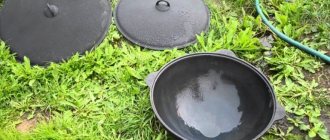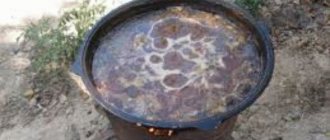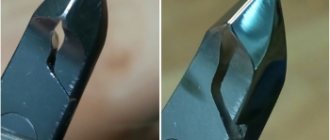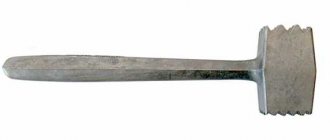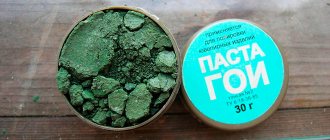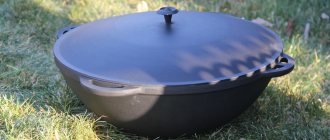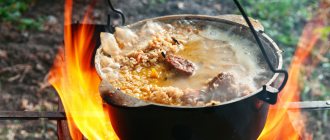Those who are partial to oriental cuisine sooner or later think about purchasing a cauldron. Without it, it is almost impossible to make classic lagman, pilaf or shurpa. This type of cookware will also be an excellent option for people who like to cook outdoors using a fire. It would seem that there is nothing easier than going to the nearest store and choosing dishes that are suitable in appearance and price. But in reality, everything is much more complicated, because ideally soft products, saturated with the aroma of spices and broth, can only be obtained in a cauldron, which is as close as possible to what is usually used in Tajikistan, Turkmenistan, Uzbekistan and other countries. Our material will reveal to you all the subtleties and nuances of choosing a real cauldron.
Cast iron cauldron
A heavy, somewhat bulky and awkward classic cauldron made of cast iron is the ideal choice for a housewife who wants to surprise and delight guests and loved ones with delicious traditional Central Asian dishes. It will serve the family for many years, giving dishes a unique aroma and taste. Thick cast iron walls guarantee the necessary heat transfer. The food does not burn during the cooking process; it simmers slowly and reaches perfect condition.
Most often, cauldrons are cast in factories. Therefore they are monolithic and durable. However, if dropped, a cast iron cauldron may unexpectedly break. And it’s easy to drop such a heavy object. Therefore, you should be especially careful.
Other criteria
When you have already selected the optimal cauldron for your purposes, do not rush to pay immediately. Even if the product is made of high-quality cast iron, you are satisfied with its size and shape, be sure to examine its surface very carefully.
Cast iron is not smooth. There may be some roughness, minor bulges, etc. on the surface. This is completely acceptable. But there are no large dents, cracks or scratches.
If they are found, most likely the storage and transportation of the cauldron was incorrect. And in the process of preparing dishes for debut use, unpleasant surprises await you.
Aluminum cauldron
An aluminum cauldron is a good alternative to a cast iron cauldron. It is worth noting right away that cauldrons made of pure aluminum are extremely rare. Most often it is an alloy of metals, where aluminum comes first. Iron, manganese, and copper are added to the alloy during casting.
The main advantage of an aluminum cauldron is weight. It is much lighter than cast iron. But the food there is prepared a little differently. We are no longer talking about slow classical languor. You have to carefully monitor the intensity of the flame.
The opinion about the oxidation of food when cooking it in such a cauldron is erroneous. Mainly because the fatty film that forms on the walls of the pot during use of the cauldron reliably protects food from oxidation. True, you shouldn’t store the dish in such a cauldron for a long time; it’s better to transfer it to another dish.
Ideal for electric stoves because it heats up faster. Categorically not suitable for glass ceramics.
Reliable manufacturers
Cast iron cauldrons are available in the range of most kitchen utensil manufacturers. When choosing a product, the brand name does not play a special role; the material, wall thickness and shape of the cauldron are much more important.
However, it is useful to know some things:
- Kazan is the national dishware of Tajikistan, Uzbekistan and other countries of Central Asia. It has been used there for a very long time, and it is these manufacturers who often offer the best models.
- The Russian market contains a mixture of both real goods from Central Asia and handicrafts made in China.
- You should be very careful when handling Chinese cauldrons. They are often thin-walled and made of low-quality metal. Such dishes will not last long; the taste of food cooked in it will not be rich. In the worst case, due to the poor quality of the material, you can completely ruin the dish and your stomach.
Inspect the product from all sides before purchasing. Chips, cracks and dents are not acceptable. If you want to play it safe, buy a cast iron cauldron with an enamel coating. This will help protect it from chipping.
Here is a small list of trustworthy manufacturers:
- Kama dishes.
- Tundra Grill.
- Forester.
- Kukmara.
- Mayer&Boch.
Stainless steel cauldron with enameled or non-stick coating
Practical Europeans are not ready to invest money in making cast iron cookware. It is much more common for them to cook in a stainless steel cauldron, additionally coated with either enamel or a non-stick layer.
You can call this utensil a cauldron only by its shape. According to its other characteristics, it is in no way suitable for preparing traditional oriental dishes. The walls of these cauldrons are thin, and the coating is not suitable for constant mixing of products, which is necessary in many recipes. Since the layer of enamel or non-stick coating may be damaged. But for stewing in the oven, an enamel cauldron is ideal
What size cauldron is best to buy?
The answer to this question is very individual. First of all, it depends on the number of family members, as well as on how often you gather guests and pamper them with culinary delights.
For a small family of 3 people, three liters of dishes will be enough. You can quickly prepare pilaf, meat, vegetables and grains for a one-time meal. Well, maybe the head of the family will have some leftovers to spare.
If you have more than four people in your family, and you are used to cooking for future use, a 7-8 liter cauldron will satisfy all your needs. You should not buy larger cookware for cooking in the kitchen. It simply cannot warm up properly on either a gas or electric stove.
There are huge cauldrons designed for cooking over an open fire. They are most often bought for a summer house or country house. The volume of utensils starts from 18-20 liters. You can be sure that you will please at least 20 people with your culinary masterpieces.
In Uzbekistan, there are still giant cauldrons that can barely be carried by four people even empty. They cook in such vessels for major holidays. For example, for a wedding, or for a funeral. For such a giant, they dig a special hole, fill it with coals, place a cauldron, add food and cover it with a huge lid. Sometimes they put a robe on top. The pilaf turns out incredibly tasty.
Other accessories
When you have purchased the necessary cauldron, you will also need for a full-fledged culinary process: cutting boards, sharpened knives, a metal slotted spoon, and wooden tongs.
Your cooking kit should include cutting boards. These are normal hygiene rules. For example, raw meat is cut on one board, boiled meat on another, and vegetables on a third. Make notes on the boards about their purpose in your process.
It is also necessary to have several knives. You can work with a chef's knife. It is suitable for any products. But it is better to have knives with short and long blades.
Cauldron shape
The most popular are two forms of cauldrons. The classic Asian cauldron is cast in the shape of a hemisphere. Cooking in such a cauldron can only be done either on a special tripod installed above the fire, or in a specially folded oven, where a separate place is provided for the cauldron. This shape is not accidental. In such a cauldron, food is heated evenly during cooking, which is especially important if dishes are laid in layers.
But such a cauldron is not suitable for an ordinary kitchen. It simply will not stand on the slab without any support points. Therefore, to use cauldrons on gas or electric stoves, it makes sense to purchase dishes with a flat bottom. It is worth noting that it also tapers somewhat and is rounded towards the bottom, but is quite stable on the slab.
About the importance of the material
Cauldrons are made from cast iron, copper, steel and aluminum. Steel and copper are less popular, as they require complex maintenance and there is a risk of rust formation or toxic metal compounds getting into food.
Cast iron has undeniable advantages, which makes it the most popular material for such products:
- Very high strength (if used correctly) and durability. Over the years, the value of the cauldron only increases.
- Food stays hot longer. In a large cauldron it will cool for several hours.
- Heating occurs quickly and evenly.
- Food doesn't burn.
- The strong lid does not release steam, which contributes to better heating of food.
Benefits come at a price. The disadvantages of cast iron include:
- Fragility. If struck strongly by a hard object, the product may break.
- Heavy weight, which makes a cast iron product not the best choice for tourists.
- Unassuming appearance. Although this is a matter of taste: some may like the primitive roughness of cast iron cookware.
Expert opinion
Levin Dmitry Konstantinovich
I myself have two cauldrons: cast iron and aluminum. Because of its advantages, I use the cast iron one on a regular basis, and I take the small aluminum one on hikes so as not to carry extra pounds.
How to prepare a cauldron for first use
On cast iron cauldrons, and on aluminum ones too, casting defects are sometimes encountered. These can be cracks, unevenness, roughness and even distortions. When purchasing, choose the most even specimen without visible defects. And it’s worth paying attention to the presence of a factory mark. Ideal if the cauldron comes from Uzbekistan.
Residues of oil or rust should not bother you. Both are found everywhere. Machine oil is used in the production of the product. And there is no escape from this. Therefore, the first task of the housewife is to remove the oil.
To do this, first wash the cauldron in warm water and regular laundry soap. Rub thoroughly, not only inside, but also outside.
As soon as you feel that the cauldron is clean, place it on the stove over high heat to thoroughly heat it. Ideally, it would be nice to do this outside on an open flame. But you can do it at home, just open the windows wider. During this procedure, the cauldron will begin to smoke heavily. The smell will also not be pleasant.
When the smoke disappears, pour sunflower oil into the cauldron. 400-600 grams will be enough. The oil should heat up well, and the walls of the cauldron should acquire a reddish tint. Now carefully tilt the cauldron so that the oil gets on all the walls of the dish. Both the cauldron and the oil are very hot, use extreme caution and attention.
An aluminum cauldron should not be heated too much; it may become deformed.
Once all the walls of the dish have been heated with oil, you can put out the fire and leave the cauldron to cool. The dishes cool down slowly. Will have to wait. When everything has cooled down, the oil can be drained and the cauldron rinsed with warm water without any products or additives. Then wipe it dry and you can start cooking.
A kind of greasy film is a prerequisite for normal operation of the cauldron. That is why old cauldrons are held in high esteem among Uzbeks, Tatars and other residents of Central Asia. During use, all the smallest cracks and even pores become clogged with fat. This film does not wash off for years. This layer prevents the food from burning. A kind of natural non-stick coating.
Wall thickness
The thicker the walls, the better. This directly affects how long the food will remain hot after cooking, as well as the reliability of the product. The thickness should be at least 4 mm, ideally 5 mm or more. There are Chinese crafts on the market with walls only 3 mm thick. The sellers are proud of this and assure that this is how it should be. Don't buy it.
Expert opinion
Levin Dmitry Konstantinovich
A real Central Asian cauldron is always thick-walled, and this is not due to imperfect production, but to centuries of experience. Of course, the product will be heavy, and that's normal.
How to care for a cauldron
Cast iron cookware is quite easy to maintain. But a number of requirements still need to be met.
- Any food fragments remaining on the walls of the dish must be removed immediately.
- Rinse utensils with warm water.
- Wipe with a cloth and rinse again.
- Pour warm water and boil it.
- Drain the water and wipe the cauldron dry.
- Grease the cauldron with vegetable oil.
It is strictly not recommended to soak the cauldron overnight or fill it with water. You cannot use household chemicals for washing; it will destroy the fatty film that is so important for cooking and the dishes will burn.
If all the manipulations were not done on time, and the food in the cauldron has dried out, you will have to wash it and then bake it, as if for the first time. You can also ignite it with salt. A kilogram will be enough. But after the salt and burnt residues are removed, you still have to calcinate it with oil. If this is not done, then a cauldron simply washed under running water will soon become covered with rust. And food cooked in such a container will acquire an unpleasant taste and smell.
Do you need a lid for the cauldron?
The question is rhetorical. Almost all dishes in a cauldron are prepared with a lid. Moreover, with a cast iron lid. Well, or with aluminum, if you chose an aluminum cauldron. Glass lids, so popular lately, are not always suitable. It's not about the material, but about the tightness of the fit. If you manage to find a glass lid with the ideal diameter, you can use it.
Needless to say, the lid handle should not be plastic? Some dishes are prepared in the oven. And plastic will not work here. There are lid options with a plastic handle that can be easily unscrewed. The remaining hole can be covered with bread crumb, for example, and the dish can be put into the oven.
By the way, Stalik Khankishiev, a well-known guru of Central Asian cuisine in the post-Soviet space, suggests covering the cauldron with a wooden lid when preparing a number of dishes. The culinary master claims that this is an ideal option for obtaining crumbly pilaf. The trick is that a wooden cauldron lid has lower thermal conductivity, and it is also hygroscopic. This allows you to reduce the amount of condensation that will return to the pilaf and turn it into porridge, and will also help the rice to warm up evenly.
